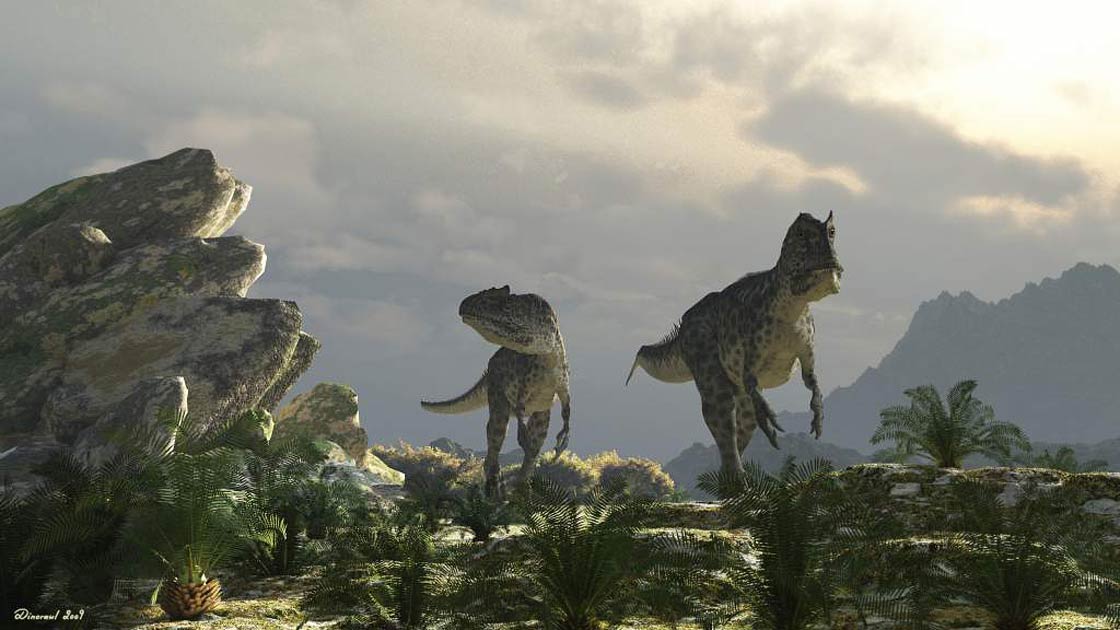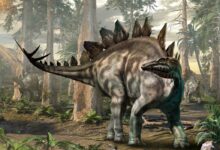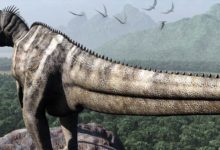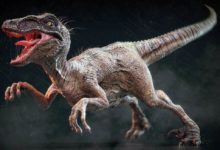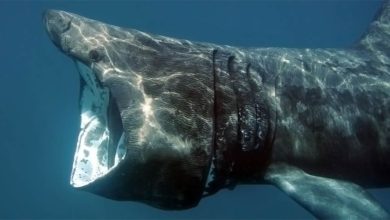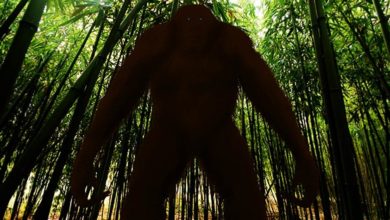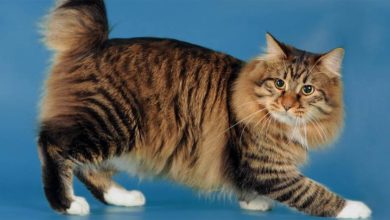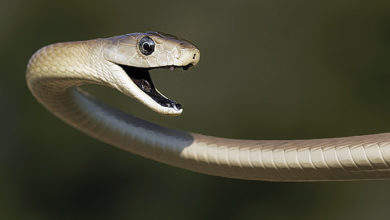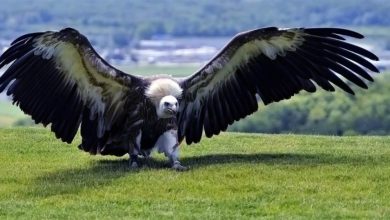Carnosaurs – the largest predators among dinosaurs
Carnosauria – large predatory dinosaurs
Some house-tall predators were the largest bipedal animals of all time. All Carnosaurs, even the carrion ones, had to be strong in order to detach the flesh from the bones. Sharp teeth and claws were very necessary for predators to hunt and defend.
Although initially all giant theropods that were not closely related were attributed to Carnosauria, later the group was redefined so that it included only Allosauroids and their closest relatives. Since the 1990s, scientists have discovered the fossil remains of some very large Carnosaurs such as the Giganotosaurus and Tyrannotitan, which are one of the largest known carnivorous dinosaurs.
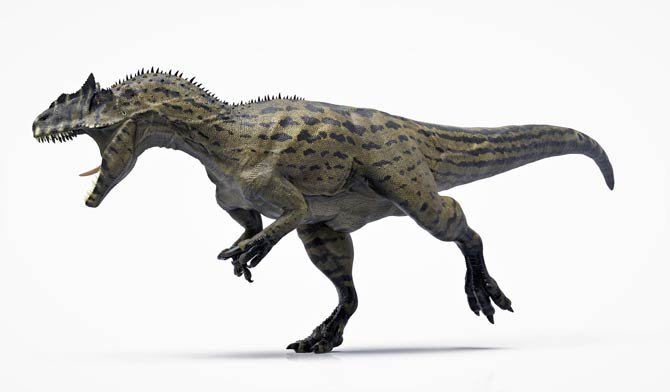
Carnosaurs (Carnosauria)
Carnosaurs are characterized by large eye sockets, a long, narrow skull, and modifications to the hind limbs and pelvis, such as the femur, which is longer than the tibia.
The first Carnosaurs appeared in the Early Jurassic, about 176 million years ago. The last known Carnosaurs, definitely belonging to this group, Carcharodontosaurids, became extinct in Late Cretaceous about 88 million years ago.
Among the Carnosaurs, there were also huge dinosaurs, such as the Giganotosaurus, and relatively small predators (for example, the Gasosaurus). They had a massive, tall skull, huge jaws with sharp, backward-curved dagger-like teeth to grab and tear prey. These teeth were specifically designed to attack large, mostly herbivorous dinosaurs. The hind limbs in Carnosaurs were very long and powerful. Well developed, they, together with the tail, served as a reliable support for the body. As for the forelimbs, they were very small, even miniature. They had only 2 full fingers each.
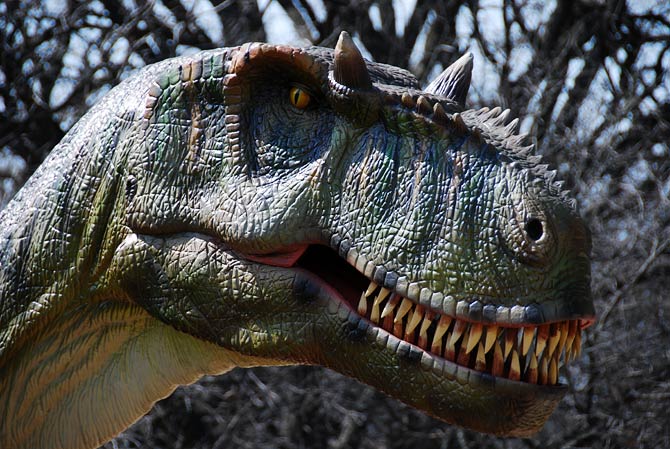
Classification changes
While until a few years ago all large carnivorous dinosaurs were assigned to Carnosauria, more and more recent differences between the individual representatives were discovered, which made a re-evaluation of Carnosauria necessary. The family Tyrannosauridae is now counted among the Coelurosauria. The grouping of Megalosaurus and Allosaurids (Allosauroidea) into a monophyletic group is also controversial and is not accepted by most experts. Therefore, a new definition of the group was recently created, according to which Carnosauria includes all those theropods that are more closely related to Allosaurus than to birds.
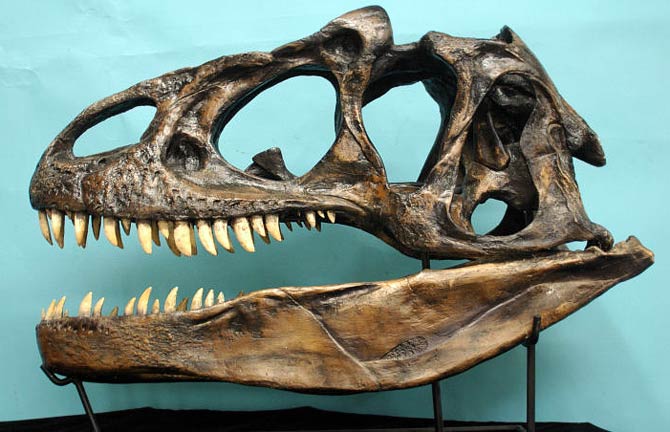
Allosaurus
An example of a common Carnosaurs is Allosaurus (“alien, different, strange lizard”), which lived about 155-145 million years ago. Allosaurus grew up to 12-13 meters (39-43 ft) in length and weighed up to 4 tons (8,800 lb). Such a huge animal probably could not move quickly over long distances.
The short but strong forelegs helped the Allosaurus hold its prey. The three-toed hands were armed with sharp claws that could tear the skin and flesh of the victims. However, they were not used to move – Allosaurus only walked on its hind legs. The skull of Allosaurus was almost a meter long. There were seventy serrated-edged teeth in the mouth. They cut pieces of meat that ended up in the gaping throat.
The long tail of Allosaurus consisted of about 50 vertebrae. It helped to balance the weight of the torso leaning forward. The foot carrying the giant predator had three long toes, tipped with sharp claws.
The skull and teeth of Allosaurus were relatively small for a theropod its size. It is estimated that the length of the skull of an individual measuring approximately 8 m (26.6 ft) in length was 85 cm (33.5 in).
One of the most significant finds of Allosaurus was the 1991 discovery of “Big Al” (MOR 693), the skeleton of which is almost 95% complete. “Big Al” was about 8 meters long at the time of death. This skeleton was excavated near Shell, Wyoming by a team from the Museum of the Rockies and the University of Wyoming’s Geological Museum. The famous “Big Al” may belong to an as yet undescribed species, although it is usually considered a representative of the type species.

Detailed data / dimensions (size)
Allosaurus
- Length: 8.5-13 m (28 – 43 ft)
- Height at the withers: up to 3 m (10 ft)
- Weight: 1.4 – 2.3 t / Some estimates even go as far as 4 tons
- Lived: 155-145 million years ago (Late Jurassic)
- Food: large herbivorous dinosaurs
- Occurrence: North America, Europe (Portugal)
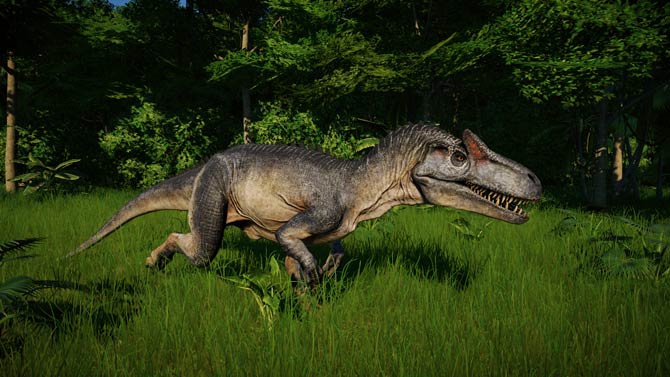
Recommended
- The longest dinosaurs. Sauropods Top 10
- The heaviest dinosaurs – Top 10
- The longest predatory dinosaurs. Theropods Top 10
- The heaviest predatory dinosaurs Top 10
- The longest Ornithischians (Ornithischia) TOP 10
- The heaviest Ornithischians Top 10
- The largest raptors (dromaeosaurs) Top 10
- The heaviest Dromaeosaurids / dromaeosaurs – Top 10
- The longest Ankylosaurus Top 10
- The heaviest Ankylosaurus Top 10
- The longest ceratopsians
- The heaviest cerapsians
- The longest and largest ornithopods
- The heaviest ornithopods Top 10
- The longest Stegosaurians (Stegosauria) TOP 10
- The heaviest Stegosaurians (Stegosauria) Top 10
- The smallest sauropods Top 10
- The smallest dinosaurs Top 10
- The largest pterosaurs Top 10
- Dinosaurs
- Dinosaurs database
- Predatory dinosaurs
- Animals & dinosaurs records
- The fastest animals – Top 100
- The fastest birds – Top 10

